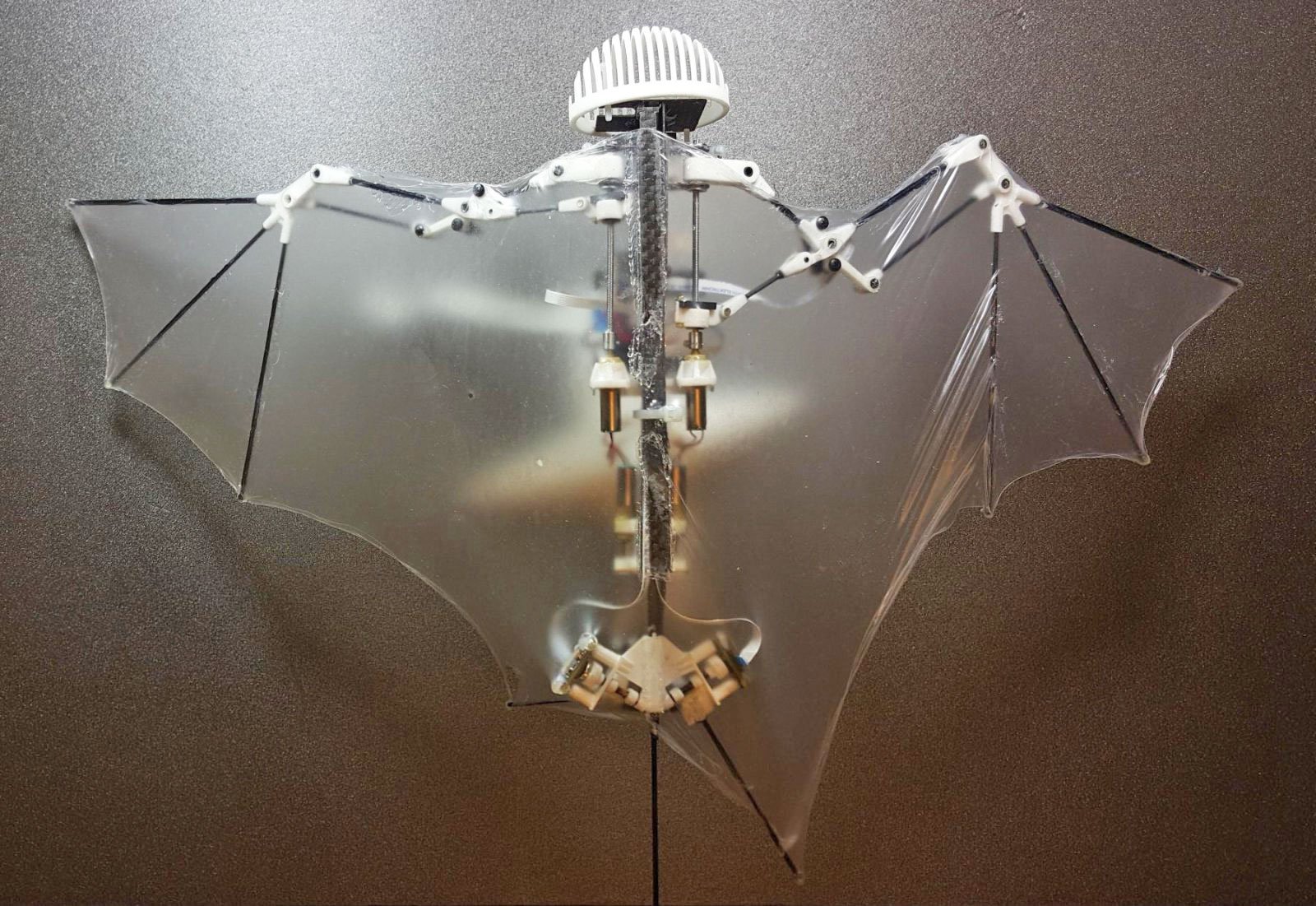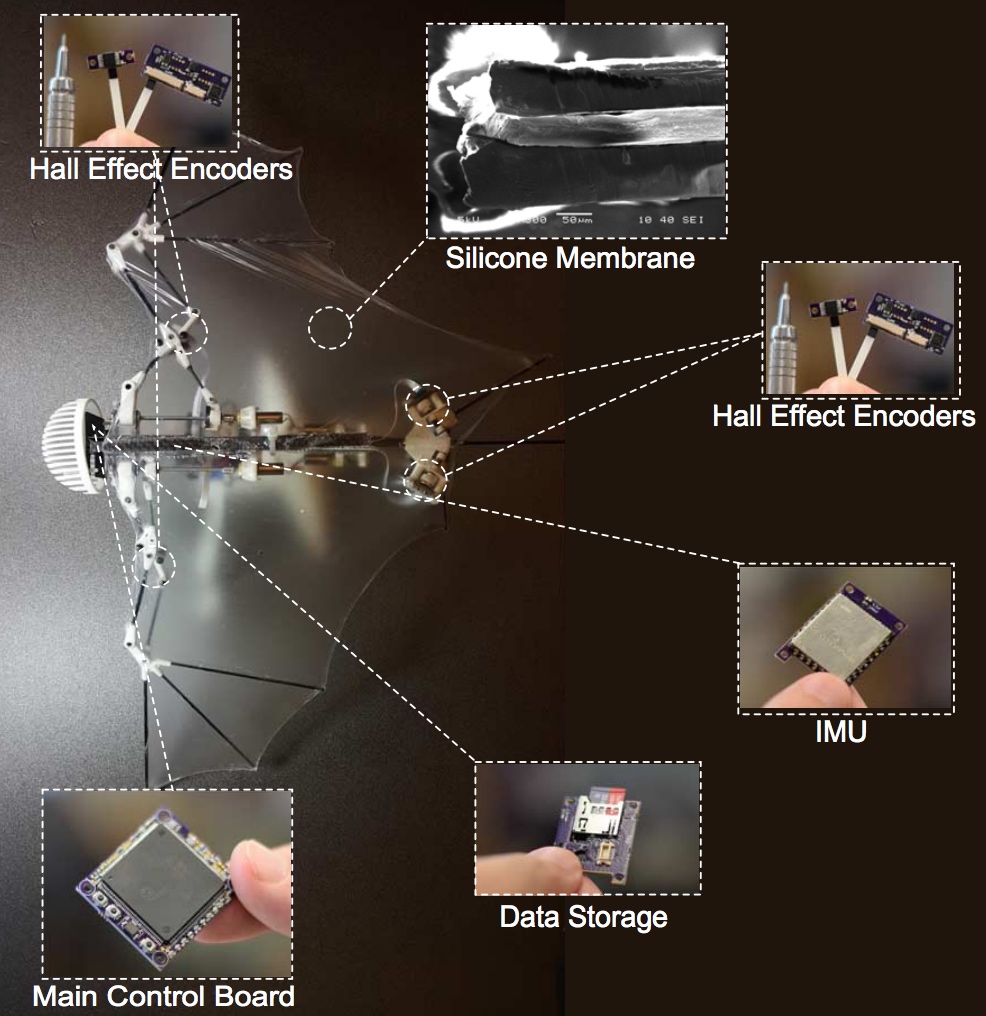Caltech has created a bat robot

The ability of bats to fly in almost total darkness, performing the most difficult maneuvers, surprised and puzzled scientists for hundreds of years. Only relatively recently, experts have figured out, so that the bat can navigate in space without the help of organs of vision. Nevertheless, experts admire not only the navigation abilities of these animals, but also their flying skills.
The mouse flies quietly, quickly, and is able to instantly change the direction of movement. If something like this could be created by man, science and technology would give a lot. Engineers and scientists have been studying the flight mechanics of these animals for a long time, trying to recreate the mouse's flight mechanism. Some people succeed.
The other day, scientists from Caltech presented their robot Bot Bot (B2), equipped with soft composite wings with membranes between the skeleton. Caltech partners in the project were a team of specialists from the University of Illinois at Urbana-Champaign (UIUC, University of Illinois at Urbana-Champaign). “The design of this robot will help us create more efficient and safer drones, and it also helped us to figure out how bats fly,” said Soon-Jo Chung , one of the project participants.
')
Chung, who joined the Caltech team, developed the bat robot, along with his ex-supervisor Alireza Ramezani (Alireza Ramezani) and Seth Hutchinson, a professor at the University of Illinois in Urbane-Champaign.
The weight of the robot is only 93 grams. Outwardly, it resembles a bat, in the image and likeness of which was designed. Wingspan - only 30 centimeters. The system during the flight can change the shape of the wings by folding or unfolding the "fingers", changing the shape and position of the wrists, legs and shoulders. Experts believe that the bat is one of the most (if not the most) difficult organized animals that can fly. The wings of the bat can change shape, and the flight mechanism includes the involvement of several types of joints, capable of fixing bones and muscles, or, conversely, increasing the number of freedoms of the components of the wing bones.
The principle of flight of bats is significantly different from the principle of flight of birds. The main feature is the flexibility and flexibility of the wing of the wing. Strong bending of the wing during its downward movement provides much greater lifting force and reduces energy costs when comparing bats with birds. When flying, while the wing moves down at its leading edge, a turbulence of air is formed, which, according to scientists, provides up to 40% of the lifting force of the wing. The air flow begins at the leading edge of the wing, then bypasses it and returns again during the reverse movement of the wing up. All this has become possible due to the flexibility of the wing, because its bend allows to keep the turbulence near the surface of the wing.

In order for the robot to fly, the developers have created a complex hardware and software system. Environmental data collected by the drone during the flight process is processed in real time. The control software receives this data and coordinates the work of the drone. All this works offline, without operator intervention.
The musculoskeletal system of the wings of a bat can perform more than 40 movements in different directions. “The result of our work is one of the most accomplished at the moment design of the wings of a robot with a bat morphology, and this robot can fly offline,” Ramezani said. Of course, this robot is still quite far from the real bat, which can catch an insect right in the air, fly around it, grab it and eat it. Such maneuverability is a matter of the future, although rather close.
Indeed, the wings of a robot can change shape, just as the owners of the “prototypes” do. It is quite difficult to make a wing of this type, for this it is necessary to perfectly understand the anatomical features of the musculoskeletal system of bats. As an alternative to the skin of the material, engineers created a film with a thickness of only 56 microns, which is based on silicone. This material can stretch and shrink, almost as well as the skin covering the wings of bats.
According to the developers, flying robots, bats can be much more energy efficient than conventional aircraft. Robots of this type can be used as an alternative to drones. Moreover, unlike most drones, artificial bats will be able to quickly change the direction of flight. Plus, they will not be as dangerous to humans (in terms of the possibility of injury), as the same copters.
Source: https://habr.com/ru/post/401345/
All Articles